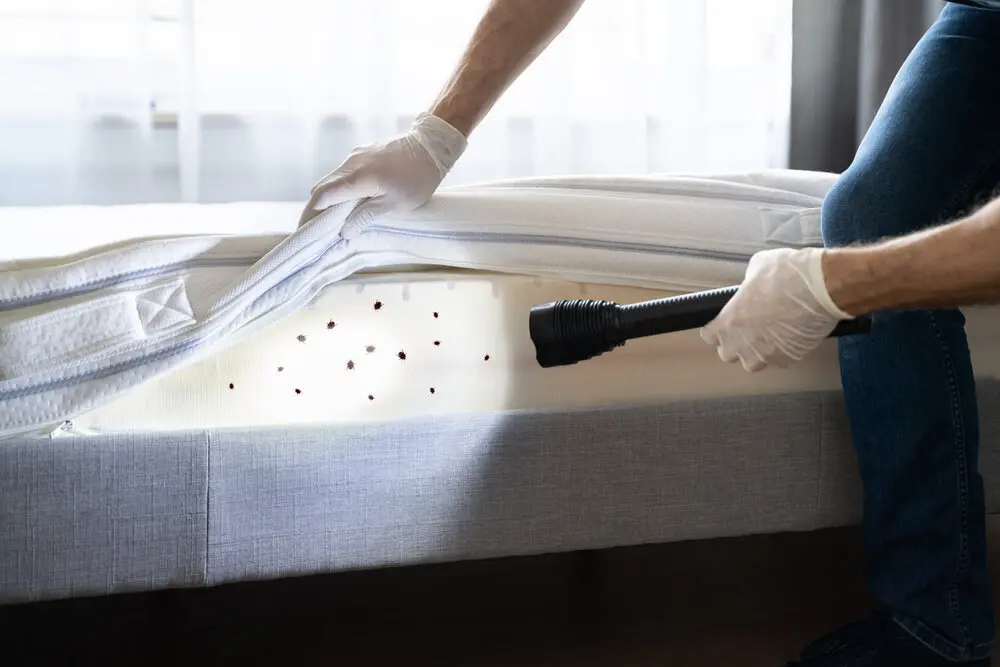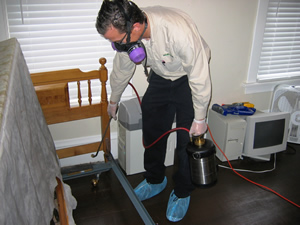Reliable A1 Bed Bug Treatment Houston - Proven Approaches
Reliable A1 Bed Bug Treatment Houston - Proven Approaches
Blog Article
Comprehending the Lifecycle of Bugs for Targeted Control Methods
Recognizing the lifecycle of parasites is an essential aspect of reliable parasite administration strategies. Via a much deeper understanding of how bugs flourish and evolve, customized control methods can be made to deal with details points in their lifecycle, eventually leading to more successful parasite management results.
Importance of Comprehending Pest Lifecycle
Comprehending the lifecycle of parasites is vital for creating effective and targeted control methods in pest administration. By understanding the numerous stages an insect goes via from egg to adult, insect control experts can identify weak spots in the lifecycle where intervention can be most successful. Recognizing when larvae are most energetic can assist determine the ideal timing for applying larvicides. Additionally, recognizing the lifespan of an insect varieties can assist in predicting population growth patterns and potential infestation risks.
Furthermore, acknowledging the particular environmental problems essential for each and every phase of the parasite's lifecycle can guide decisions on habitat modification or exemption approaches to minimize and interrupt the lifecycle insect populations. This expertise makes it possible for pest monitoring professionals to implement proactive actions instead than counting exclusively on reactive treatments, leading to even more lasting and lasting insect control solutions. Ultimately, an extensive understanding of pest lifecycles encourages bug control experts to customize their techniques effectively, making best use of and decreasing ecological effects control outcomes.
Trick Phases in Bug Development
To successfully apply targeted control approaches in parasite monitoring, a crucial aspect lies in comprehensively identifying and understanding the key phases in pest advancement. Insect advancement normally consists of numerous vital stages that are essential for their lifecycle and monitoring.

Vulnerabilities in Parasite Lifecycle
Throughout the numerous stages of a pest's lifecycle, distinctive vulnerabilities emerge that can be strategically targeted for reliable control procedures. One important vulnerability exists in the egg phase, where insects are usually extra at risk to specific insecticides or biological control representatives because of their soft external shell, making them simpler targets for treatment. Furthermore, the larval or nymph phase presents vulnerabilities as insects undertake fast development and advancement, requiring high power usage that can be manipulated by disrupting their food resources or introducing development inhibitors. Pupal phases, defined by immobility and makeover, provide a window for targeted control with physical obstacles or details therapies that hinder successful introduction. Adult insects, while a lot more resistant due to their reproductive ability, can still be vulnerable during mating or egg-laying activities, which can be disrupted through pheromone traps or sterilization methods. Recognizing these susceptabilities in the pest lifecycle is vital for creating reliable and precise control approaches that effectively take care of pest populations while decreasing environmental effect.
Applying Targeted Control Procedures

Implementing targeted control actions usually entails a multi-faceted method. This might include environment modification to make the setting less welcoming to insects, such as getting rid of standing water for mosquito control or securing access points for rats. Additionally, biological control approaches can be utilized, where all-natural predators or microorganisms are presented to keep insect populaces in check.
Chemical control, such as the careful application of chemicals, is an additional common method. It is essential to utilize these materials deliberately to reduce ecological influence and potential harm to non-target types - A1 Bed bug Exterminator houston. Integrated Bug Monitoring (IPM) approaches that combine various control steps in a collaborated and lasting fashion are often the most effective in Full Report accomplishing long-lasting insect administration objectives. By applying targeted control measures based on an extensive understanding of bug lifecycles, bug populaces can be properly regulated while minimizing risks to human health and the atmosphere.
Improved Insect Management Practices

Moreover, the incorporation of biological control representatives, such as all-natural predators or microorganisms of parasites, can help in reducing dependence on chemical pesticides and advertise a more balanced ecological community. Executing physical barriers and catches can additionally belong to improved bug monitoring practices, offering non-toxic and targeted options for parasite control. Additionally, the use of scents and various other semiochemicals can interfere with pest breeding patterns and interaction, resulting in minimized parasite populaces over time.
Conclusion
In final thought, comprehending the lifecycle of bugs is critical for effective pest management techniques. By identifying essential stages in insect advancement and susceptabilities in their lifecycle, targeted control procedures can be applied to decrease parasite populaces. Boosted bug administration methods can help in reducing the dependence on broad-spectrum pesticides and promote more lasting and eco pleasant insect control techniques. This knowledge plays an important role in maintaining healthy and balanced ecosystems and farming performance.
Recognizing the lifecycle of bugs is important for developing efficient and targeted control techniques in parasite administration. By comprehending the different stages a bug goes through from egg to grownup, insect control specialists can determine vulnerable factors in the lifecycle where intervention can be most effective. Ultimately, a thorough understanding of bug lifecycles empowers bug control practitioners to customize their approaches successfully, straight from the source making the most of and lessening environmental effects control outcomes.
By carrying out targeted control actions based on an extensive understanding of pest lifecycles, insect populaces can be effectively managed while decreasing risks to human health and wellness and the setting.
By identifying essential phases in parasite development and susceptabilities in their lifecycle, targeted control actions can be implemented to lessen pest populations.
Report this page